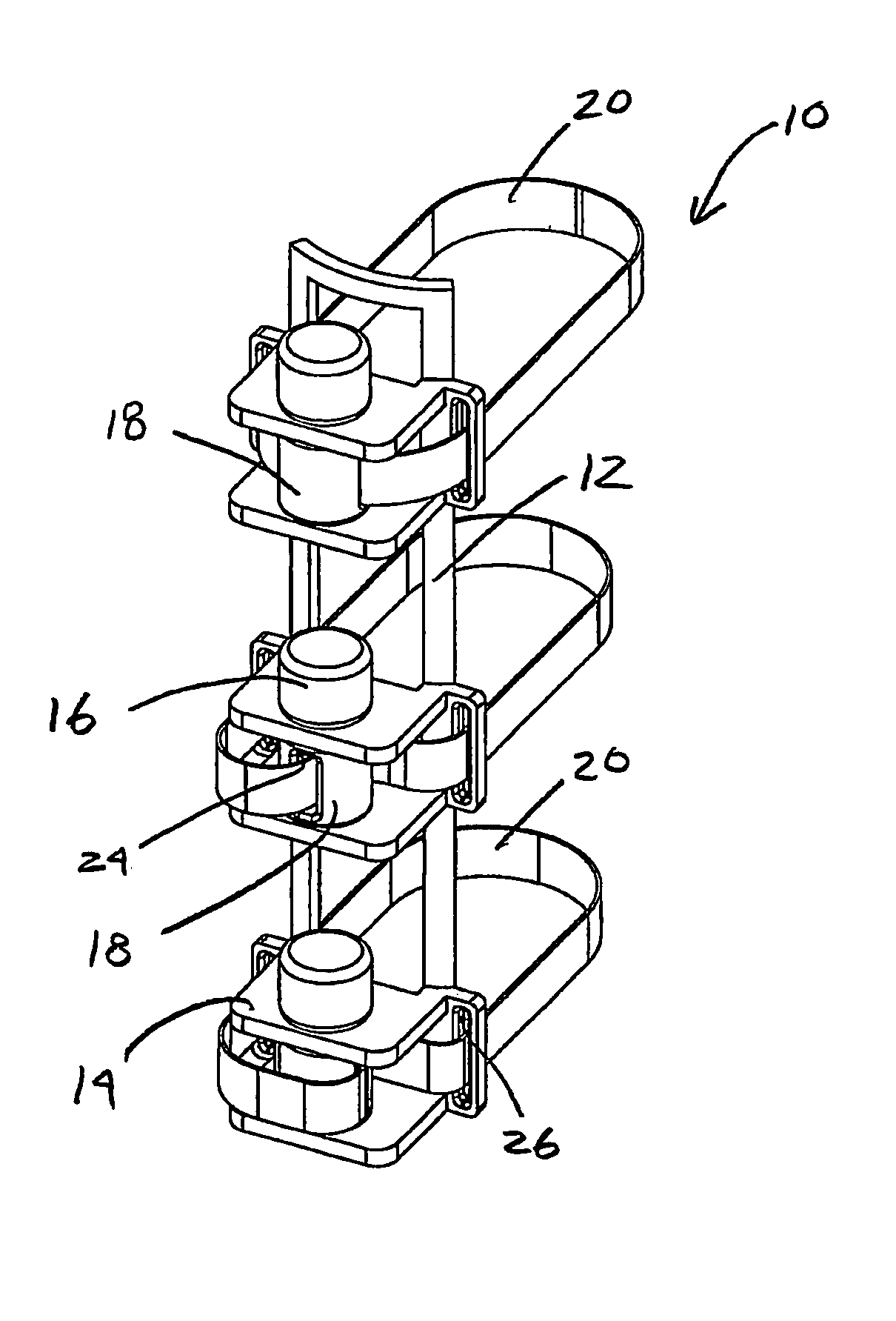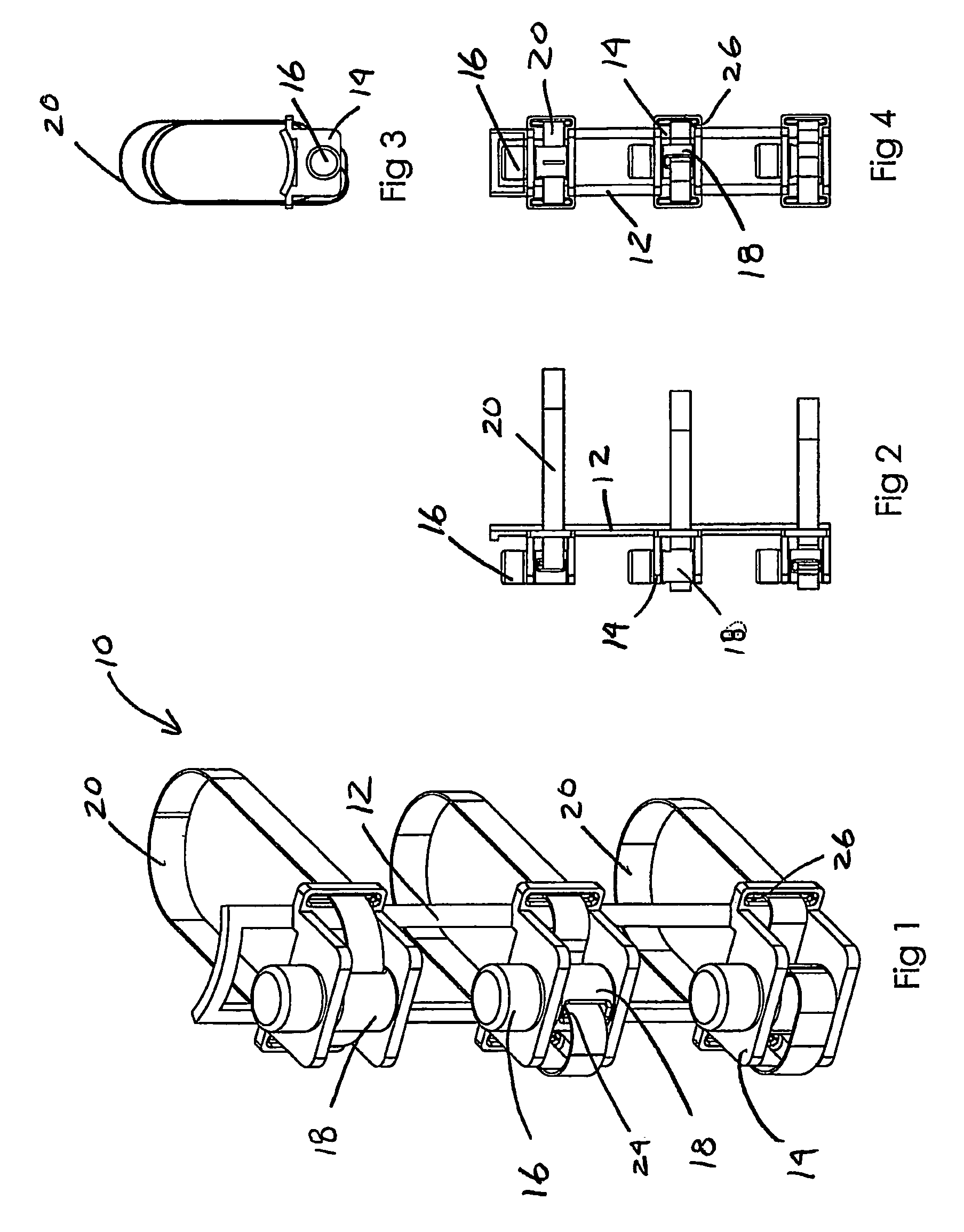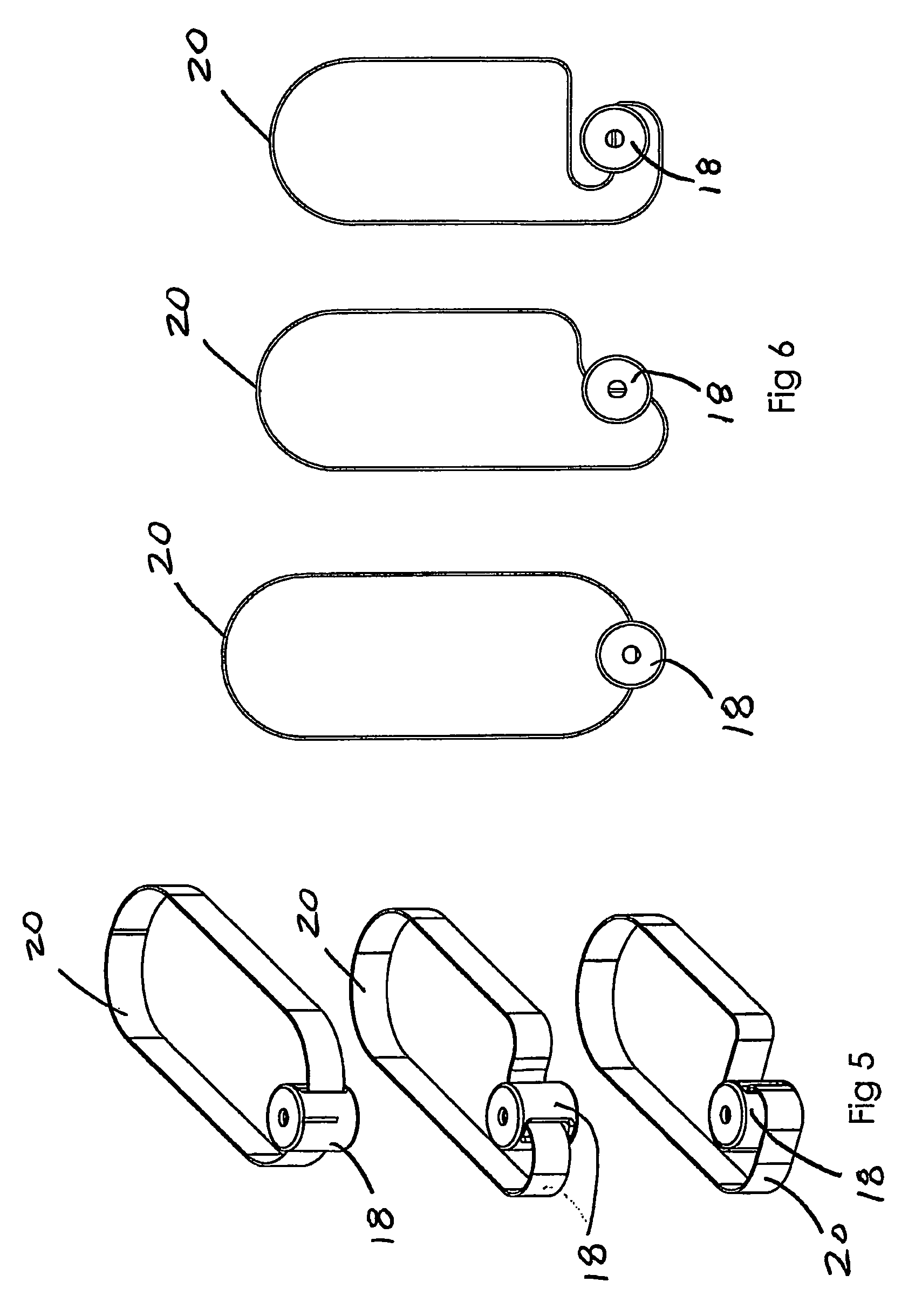Portable compression device
a compression device and portability technology, applied in the field of compression devices, can solve problems such as venous valves becoming incompetent, venous valves becoming prone to failure, and functional failures,
- Summary
- Abstract
- Description
- Claims
- Application Information
AI Technical Summary
Benefits of technology
Problems solved by technology
Method used
Image
Examples
Embodiment Construction
[0086]The invention will now be described in detail in relation to various embodiments and implementations thereof which are exemplary in nature and descriptively specific as disclosed. As is customary, it will be understood that no limitation of the scope of the invention is thereby intended. The invention encompasses such alterations and further modifications in the illustrated apparatus and method, and such further applications of the principles of the invention illustrated herein, as would normally occur to persons skilled in the art to which the invention relates.
[0087]In various embodiments, a portable compression device can be used to compress a mammal's, such as a human patient's, limbs or extremities (hereafter the term “limb” and “extremity” can be used interchangeably). In at least one embodiment, the portable compression device (hereafter “PCD”), can be non-pneumatic and can use mechanical compression of the patient's limbs to apply external pressure to at least a portio...
PUM
 Login to View More
Login to View More Abstract
Description
Claims
Application Information
 Login to View More
Login to View More - R&D
- Intellectual Property
- Life Sciences
- Materials
- Tech Scout
- Unparalleled Data Quality
- Higher Quality Content
- 60% Fewer Hallucinations
Browse by: Latest US Patents, China's latest patents, Technical Efficacy Thesaurus, Application Domain, Technology Topic, Popular Technical Reports.
© 2025 PatSnap. All rights reserved.Legal|Privacy policy|Modern Slavery Act Transparency Statement|Sitemap|About US| Contact US: help@patsnap.com



